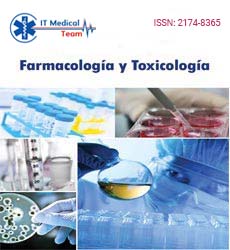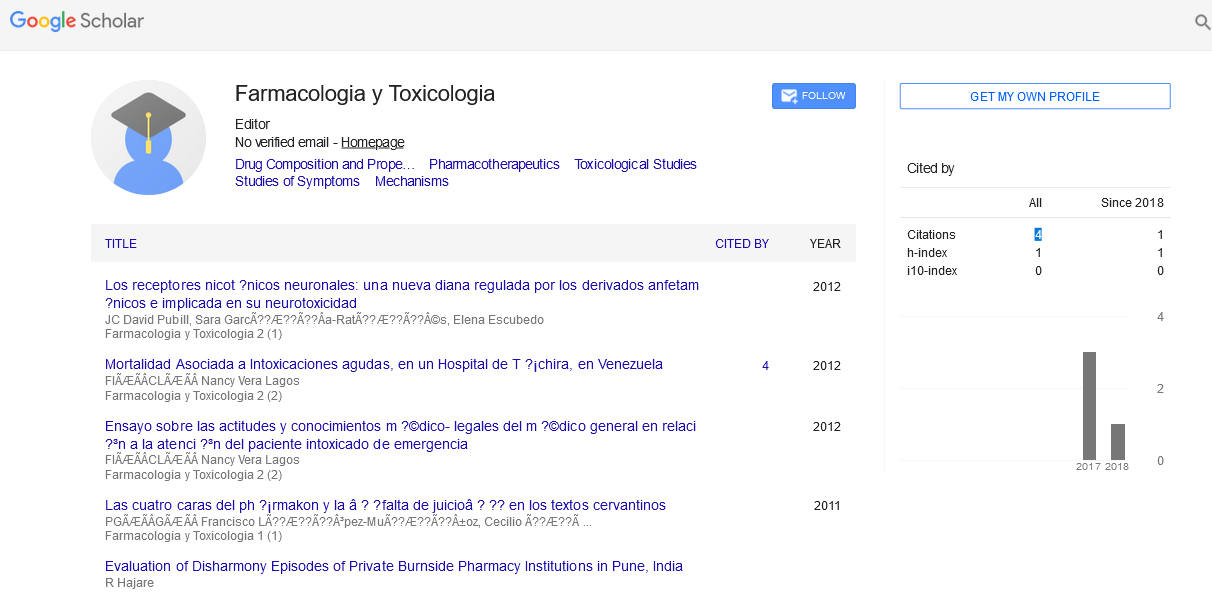Commentary Article - (2023) Volume 13, Issue 2
Advancements in Pharmacological Screenings: Techniques, Technologies, and Applications for Drug Discovery
Ujvyid Tanyehi*
1Department of Industrial and Systems Engineering, North Carolina State University, Raleigh, NC 27606, USA
*Correspondence:
Ujvyid Tanyehi, Department of Industrial and Systems Engineering, North Carolina State University, Raleigh, NC 27606,
USA,
Email:
Received: 03-Apr-2023, Manuscript No. ipft-23-13753;
Editor assigned: 05-Apr-2023, Pre QC No. P-23-13753;
Reviewed: 19-Apr-2023, QC No. Q-23-13753;
Revised: 22-Apr-2023, Manuscript No. R-23-13753;
Published:
28-Apr-2023
Abstract
Pharmacological screenings play a critical role in drug discovery and development. These screenings involve the testing of large libraries of compounds to identify potential therapeutic candidates for various diseases. In this manuscript, we review the different types of pharmacological screenings, their advantages and limitations, and their applications in drug discovery. We also discuss the various techniques and technologies used in pharmacological screenings, including highthroughput screening and virtual screening. Finally, we highlight some recent advancement in the field of pharmacological screenings and their potential impact on drug discovery.
Keywords
Pharmacological screenings; Drug discovery; Highthroughput screening; Virtual screening; Compound libraries
INTRODUCTION
Pharmacological screenings are a crucial step in the drug
discovery process, allowing researchers to identify potential
therapeutic candidates for a wide range of diseases.
These screenings typically involve the testing of large
libraries of compounds, ranging from natural products to
synthetic molecules, to identify those that exhibit specific
pharmacological activities. The results of these screenings
can then be used to guide further drug development and
optimization [1, 2]
DISCUSSION
Types of pharmacological screenings
There are several types of pharmacological screenings, each
with its own advantages and limitations. These include
target-based screenings, phenotypic screenings, and in vivo
screenings [3, 4].
Target-based screenings involve the use of assays that
measure the interaction between a compound and a
specific target, such as a receptor or enzyme. These assays
are highly specific and can be used to identify compounds
that bind to a particular target with high affinity. Targetbased
screenings are often used in the early stages of drug
discovery to identify compounds that have the potential to
modulate a specific target.
Phenotypic screenings, on the other hand, involve the use of
assays that measure a specific cellular response, such as cell
proliferation or apoptosis. These screenings are less specific
than target-based screenings but can identify compounds
with a broader range of pharmacological activities.
Phenotypic screenings are often used in later stages of drug
discovery, where the goal is to identify compounds that
exhibit a desired biological effect in cells or tissues [5, 6].
In vivo screenings involve the testing of compounds in
animal models to evaluate their efficacy and safety. These
screenings are the most physiologically relevant and can
provide valuable information about the pharmacokinetics
and pharmacodynamics of a compound. In vivo screenings
are typically used in the later stages of drug development,
after a compound has been identified as a potential
therapeutic candidate [7].
Techniques and technologies used in
pharmacological screenings
Pharmacological screenings rely on a variety of techniques
and technologies to identify potential therapeutic
candidates. High-throughput screening (HTS) is a widely used technique that allows for the rapid testing of large
libraries of compounds. HTS typically involves the use
of robotics and automation to perform assays in a highly
parallelized manner, allowing for the screening of hundreds
of thousands of compounds in a relatively short amount
of time.
Virtual screening is another technique that has become
increasingly popular in recent years. Virtual screening
involves the use of computer algorithms to screen large
libraries of compounds in silico, based on their predicted
binding affinity to a target of interest. Virtual screening can
be used to identify potential therapeutic candidates before
they are synthesized, reducing the time and cost associated
with traditional screening approaches [8].
Recent advancements in pharmacological
screenings
Recent advancements in pharmacological screenings have
led to the development of new screening platforms and
technologies. For example, organ-on-a-chip technology
allows for the testing of compounds in three-dimensional
microenvironments that more closely resemble human
tissues. This technology has the potential to improve the
accuracy and relevance of in vitro screenings [9].
Another recent advancement is the use of machine
learning algorithms to analyse large datasets generated by pharmacological screenings. Machine learning algorithms
can be used to identify patterns and relationships in the
data that may be missed by traditional analysis methods,
allowing for the identification of new therapeutic
candidates [10].
CONCLUSION
Pharmacological screenings play a critical role in drug
discovery and development, allowing researchers to identify
potential therapeutic candidates for various diseases.
The different types of pharmacological screenings, their
advantages and limitations, and their applications in drug
discovery have been reviewed in this manuscript. The various
techniques and technologies used in pharmacological
screenings, including high-throughput screening and
virtual screening, have been discussed. Finally, some recent
advancement in the field of pharmacological screenings
and their potential impact on drug discovery has been
highlighted.
ACKNOWLEDGMENT
None
CONFLICT OF INTEREST
No conflict of interest to declare about this work.
REFERENCES
- Tomlin JL, Sturgeon C, Pead MJ, et al. Use of the bisphosphonate drug alendronate for palliative management of osteosarcoma in two dogs. Vet Rec.2000:147(2): 129-32.
Indexed at, Google Scholar, Crossref
- Psychas V, Loukopoulos P, Polizopoulou ZS, et al. Multilobular tumour of the caudal cranium causing severe cerebral and cerebellar compression in a dog. J Vet Sci. 2009; 10(5): 81-3.
Indexed at, Google Scholar, Crossref
- Loukopoulos P, Thornton JR, Robinson WF. Clinical and pathologic relevance of p53 index in canine osseous tumors. Veterinary Pathology.2003; 40(8): 237-48.
Indexed at, Google Scholar, Crossref
- Bech-Nielsen S, Haskins ME. Frequency of osteosarcoma among first-degree relatives of St Bernard dogs. J Natl Cancer Inst.2003;60(4): 349-53.
Indexed at, Google Scholar, Crossref
- Wilkins RM, Cullen JW, Odom L. Superior survival in treatment of primary nonmetastatic pediatric osteosarcoma of the extremity. Ann Surg Oncol.2003; 10(4): 498-507.
Indexed at, Google Scholar, Crossref
- Kundu ZS. Classification, imaging, biopsy and staging of osteosarcoma. Indian J Orthop.2014;48(2): 238-46.
Indexed at, Google Scholar, Crossref
- Papalas JA, Balmer NN, Wallace C. Ossifying dermatofibroma with osteoclast-like giant cells: report of a case and literature review. Am J Dermatopathol.2009; 31(5): 379-83.
Indexed at, Google Scholar, Crossref
- Gelberg KH, Fitzgerald EF, Hwang SA. Fluoride exposure and childhood osteosarcoma: a case-control study. Am J Public Health.1995; 85(2): 1678-83.
Indexed at, Google Scholar, Crossref
- Luetke A, Meyers PA, Lewis A. Osteosarcoma treatment where do we stand a state of the art review. Cancer Treat Rev. 2014; 40(5): 523-532.
Indexed at, Google Scholar, Crossref
- Dhaliwal J, Sumathi VP, Grimer RJ. Radiation-induced periosteal osteosarcoma (PDF). Grand Rounds.2009;10(1): 13-18.
Indexed at, Google Scholar, Crossref





